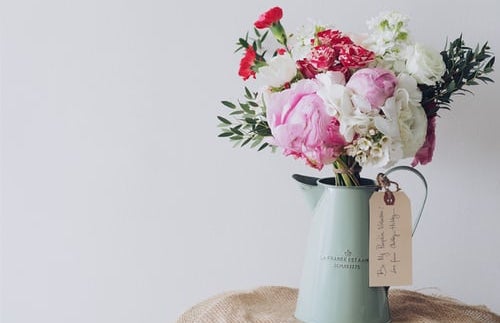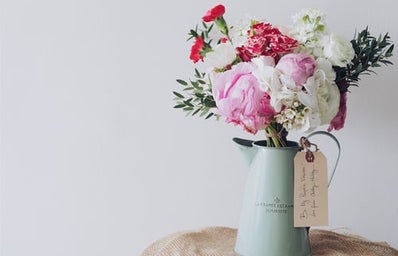Here’s the bad news: the cut flower industry is bad for the environment.
I know, I’m sad, too. Your next picnic just won’t have the same vibe without tulips and roses. However, the harmless-looking, classic gift has a greater influence on the planet than you might think.
According to GreenMatters, the flower industry is worth $5 billion annually. Surprised? Me, too. I’ve only received flowers maybe three times in my entire life. Nonetheless, all Valentine’s Days, birthdays and Mother’s Days have amounted to a lucrative, environmentally harmful industry.
So, what’s the harm in pretty flowers? Well, the flowers themselves aren’t harmful, but the transport and treatment of the flowers are.
According to the Washington Post, 93% of the 5.6 billion flower stems sold come from production greenhouses in Colombia and Ecuador. The energy that it takes to transport those delicate, perishable flowers leaves a sizable carbon footprint. The flowers go from a refrigerated facility to a cargo plane, after which the flowers are stored in another refrigerated unit. Once they’re purchased, they may be driven all over town before a deliverer leaves a “Sorry we missed you” sticker on a stranger’s door. Along that long way, the flowers have to stay practically perfect, or else the customer won’t be happy. To keep flowers looking fresh, countries like Colombia use dangerous pesticides (some of which are illegal!). Flower cut industry workers have the potential to be exposed to such pesticides, suffering from their negative effects.
Once the flowers are ready for their untimely death, the plastic packaging for the flower food, the plastic tubes at the end of the stem and the plastic wrapping that some companies tactlessly include the price on all go into the trash. It’s a plastic nightmare.
Now that you know the whole picture, were the two weeks of a more colorful countertop worth it?
As someone who likes flowers — but doesn’t love them — I’ve found sustainable alternatives to buying the three-for-$10 bouquets at Publix (what a great deal, though, huh?).
I’ve found the best plant alternative to be a potted plant. Potted plants typically cost slightly more than flowers due to the additional dirt and pot, but they’re a much better investment. Once you learn to take care of one, you can keep it alive for weeks to months — even years! Better yet, they’re great for the air in your room. If you do a good job raising one, you can move on to trusting yourself to buy a fish and not kill it on the second day.
Next on the sustainable gift list is a reusable water bottle. Although a water bottle isn’t exactly as pretty as two dozen roses, Target sells cute, trendy designs that can make any mom happy.
Beyond a mom, water bottles are great for anyone, because everyone needs water to survive. If your gift receiver doesn’t have a filtered source of water, like a fridge or a cooler, you can provide a water bottle with a built-in water filter. Not only will you be saving flowers from certain death, but you’ll be significantly reducing one person’s plastic water bottle usage.
If potted plants and water bottles don’t seem like a good replacement for flowers, a well-written, sentimental card is always a caring gift for any occasion. If you’re really committed to sustainability, you can even purchase a recycled paper card. I’ve kept every card I’ve ever received, while every bouquet of flowers has ended up in some sad two-week water with a one-way ticket to the trash can. I’m not great at math, but the answer to the better gift seems evident to me.
I know that this article will probably not make a florist’s day less busy, but it’s important to at the very least remain conscious about the impact of our decisions. My mom loves flowers and will always expect them multiple times a year, so I admittedly will buy them if it makes her day. However, I will always let my friends and partners know that I would appreciate a sustainable gift instead of flowers. (My birthday is coming up, and some potted plants would really liven up the room. Hint, hint).


